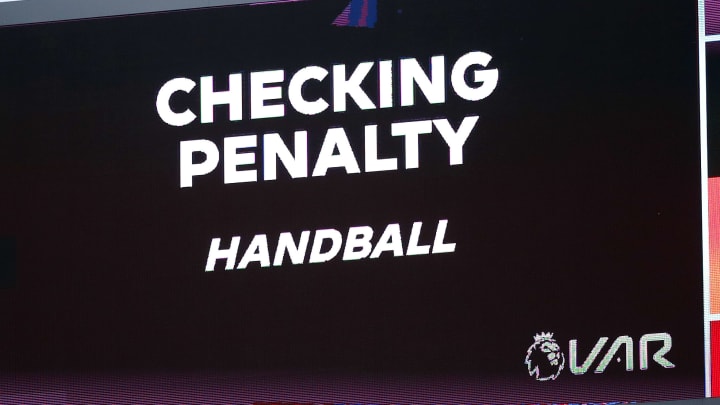Explaining Changes & Interpretations of the Handball Rule for 2020/21 Season

Football lawmakers IFAB made tweaks and changes to the ever controversial handball rule in the spring, which have now been adopted for use in the 2020/21 season.
The new rules seek to further clarify ongoing confusion over what should and should not be classified as handball - although it is not always that straightforward.
Some of the update follows directly on from rules changes passed in 2019, dictating that a goal cannot, under any circumstances, be scored with the hand or arm, even accidentally.
That has been extended to cover any accidental handball in the build up to a goal. That means if the ball strikes an arm or hand immediately before a goal is scored, not necessarily just that of the goalscorer, it will not be allowed to stand.
However, it is not a handball offence if an accidental handball is not in the immediate build up to a goal. Therefore, if there is an accidental handball that is followed by the ball travelling a significant distance, whether by a dribble or pass, or several passes in a smaller area, a goal would stand.
What defines a handball is also a new clarification. IFAB have confirmed that something should be interpreted as handball if it strikes the arm below the ‘bottom of the armpit’. That has otherwise been dubbed as the ‘T-shirt rule’ and seeks to draw a firm line between the shoulder and arm.
Essentially, if a ball strikes an arm on the shirt sleeve, it is high enough to be considered the shoulder. Any lower, it would be handball. However, it would still be a judgement call as to exactly where the bottom of the armpit is if a player was wearing long sleeves, for example.
In 2020/21, the Premier League has noted additional clarification on handball interpretation in the event that a ball strikes an arm or hand in an unnatural position – natural would be by the sides – having deflected off another body part onto the arm or hand.
Referees would previously have been inclined to wave play on in such instances, but this was highlighted when referee Michael Oliver awarded a penalty to Liverpool against Leeds on the opening day of the season.
In that instance, the ball had struck the outstretched arm of Leeds defender Robin Koch after deflecting off his knee. His arm was in an un-natural position, yet somewhat confusingly he was penalised for the accidental nature of the deflection onto his arm.
Should Victor Lindelof's handball have resulted in a Crystal Palace penalty? ?
— Sky Sports News (@SkySportsNews) September 21, 2020
Dermot Gallagher joined Ref Watch to bring to the refereeing view on The Football Show pic.twitter.com/X0Txeg0N0U
The Premier League later clarified that had Koch gone to deliberately play the ball and it subsequently deflect onto his arm, it wouldn’t have been awarded as a penalty.
An extended or high arm was also punished when the ball struck Manchester United defender Victor Lindelof on the hand in their defeat to Crystal Palace, with a firm directive for Premier League officials in the summer to penalise un-natural arm or hand positions, whether deliberate or not.
For more from Jamie Spencer, follow him on Twitter and Facebook!